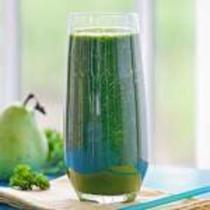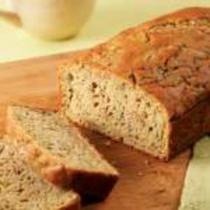Healthy Ways to Use Your Leftover Pulp from Juicing

By Breana Lai, M.P.H., R.D., Associate Food Editor, EatingWell Magazine
Juicing is an easy and quick way to get more healthy fruits and veggies into your diet. But what to do with all the leftover juice pulp when you're done? While the bulk of the vitamins and minerals are in your juice, the resulting juice pulp contains almost all of the fiber. Sure, you can always compost those shreds. But we came up with some ways to reduce food waste and get that unused fiber into your diet. Research shows that consuming fiber-rich foods is important for helping to prevent chronic diseases like diabetes and heart disease, and it might boost weight loss by helping you feel full longer after you eat.
To make use of this fiber from the juicing process, I tested two techniques: stirring it into chili and baking it into bread.
Don't Miss: See How to Juice With & Without a Juicer
Healthy Juice Recipes for a Juicer or a Blender
Based on the pulp created during juicing, I chose recipes that the pulp flavors would complement. For example, juices that contain fruit, such as apples or pears, are best in recipes that are enhanced by a touch of sweetness. For recipes that are more savory, such as soups and stews, use juice pulp with a vegetable base. One note: if you do plan to use your pulp in another recipe, remove seeds, stems and inedible or bitter skins from your produce before putting them into the juicer.
In my first test, I used the pulp from the Green Juice, made of pears, parsley, celery and spinach, to make a quick bread. I picked the EatingWell Zucchini Bread recipe, substituting 1 cup of juice pulp (approximately what remains from the recipe) in place of the 2 cups of shredded zucchini. The revamped bread was delicious. The occasional celery string didn't seem to be an issue and the EatingWell staff devoured the quick bread with their afternoon coffee and tea.

Green Juice
This healthy green juice recipe combines parsley, spinach, pears and celery to make a juice packed with bone-supporting vitamin K.
Print, share and save this recipe.

EatingWell Zucchini Bread
Try this simple zucchini bread recipe with toasted walnuts or raisins, or add chocolate chips for a more dessertlike bread.
Print, share and save this recipe.
In my second test, I made the Tomato-Vegetable Juice, which consists of romaine lettuce, tomatoes, jalapeño, red bell pepper, celery and carrots. I then stirred all the pulp into Cowboy Beef & Bean Chili when I added the mushrooms, giving the chili an extra vegetable boost. The resulting dish was tasty and the pulp had seemingly melted into the chili.

Tomato-Vegetable Juice
This healthy tomato-vegetable juice recipe contains all the components of a healthy salad, such as lettuce, tomato, bell pepper, celery and carrot, but with less salt than bottled vegetable-blend juices
Print, share and save this recipe.

Cowboy Beef & Bean Chili
Anything but dainty, this healthy cowboy beef and bean chili recipe is hearty with the addition of mushrooms and beer.
Print, share and save this recipe.
While researching the topic of juice pulp, I found suggestions for using the pulp in pancakes, stirring it into mashed potatoes, adding it to pasta sauce, molding it into burgers and even mixing it into dog food. The uses for juice pulp seem to be endless!
What do you do with your juice pulp?
By Breana Lai, M.P.H., R.D.

Breana Lai, M.P.H., R.D., is an Associate Food Editor at EatingWell where she splits her time between EatingWell magazine, eatingwell.com, and cooking new healthy recipes in the test kitchen. Breana has a master's degree in Public Health from the University of North Carolina at Chapel Hill, is a graduate of Le Cordon Bleu London, a Wine Spirit & Education Trust trained sommelier and is a registered dietitian.
Related Links from EatingWell:
